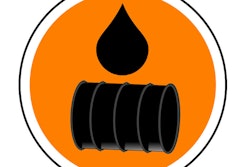Even "modest" action to limit climate change could help prevent the most extreme water-shortage scenarios facing Asia by the year 2050, according to a new study led by MIT researchers.
Roughly 60 percent of the global population lives in Asia, often with limited access to water. There is less than half the amount of freshwater available per inhabitant in Asia, compared to the global average.
To examine the risk of water shortages on the continent, the MIT researchers conducted detailed simulations of many plausible economic and climate pathways for Asia in the future, evaluating the relative effects of both pathways on water supply and demand. By studying cases in which economic change (or growth) continues but the climate remains unchanged--and vice versa--the scholars could better identify the extent to which these factors generate water shortages.
The MIT-based team found that with no constraints on economic growth and climate change, an additional 200 million people across Asia would be vulnerable to severe water shortages by 2050. However, fighting climate change along the lines of the 2015 Paris Agreement would reduce by around 60 million the number of people facing severe water problems.
But even with worldwide efforts to limit climate change, there is a 50 percent chance that around 100 million people in southern and eastern Asia will experience a 50 percent increase in "water stress"--their inability to access safe water--and a 10 percent chance that water shortages will double for those people.
"We do find that a mitigation strategy can reduce the heightened risk of water stress in Asia," says Adam Schlosser, deputy director for science research at MIT's Joint Program on the Science and Policy of Global Change, and co-author of a newly published paper detailing the findings. "But it doesn't solve it all."
The research team also uses models that track municipal and industrial activities and their specific water-demand consequences across many smaller subregions in Asia. Irrigation tends to be a major driver of water consumption, leading to diminished access to water for other uses.
Overall, the researchers concluded that through the mid-21st century, "socioeconomic growth contributes to an increase in water stress" across the whole region, but climate change can have "both positive and negative effects on water stress." Climate change by itself is likely to have a more adverse impact on water access in China than in India, for instance, where a warming climate could produce more rain.
Apart from the most likely scenarios, another significant finding is that the potential for extreme water stress is associated with unabated climate change. As the authors state in the paper, "A modest greenhouse gas mitigation pathway eliminates the likelihood of...extreme outcomes" in water access. But without any such climate measures, "both countries have a chance of experiencing extreme water shortages by midcentury," Gao says.
'There are no easy options," Schlosser says, of the various ways of limiting climate change. "All of them carry associated costs, and our continued research is looking at the extent to which widespread adaptive and water-efficient measures can reduce risks and perhaps be cost-effective and more resilient."
(Source: Massachusetts Institute of Technology)






















